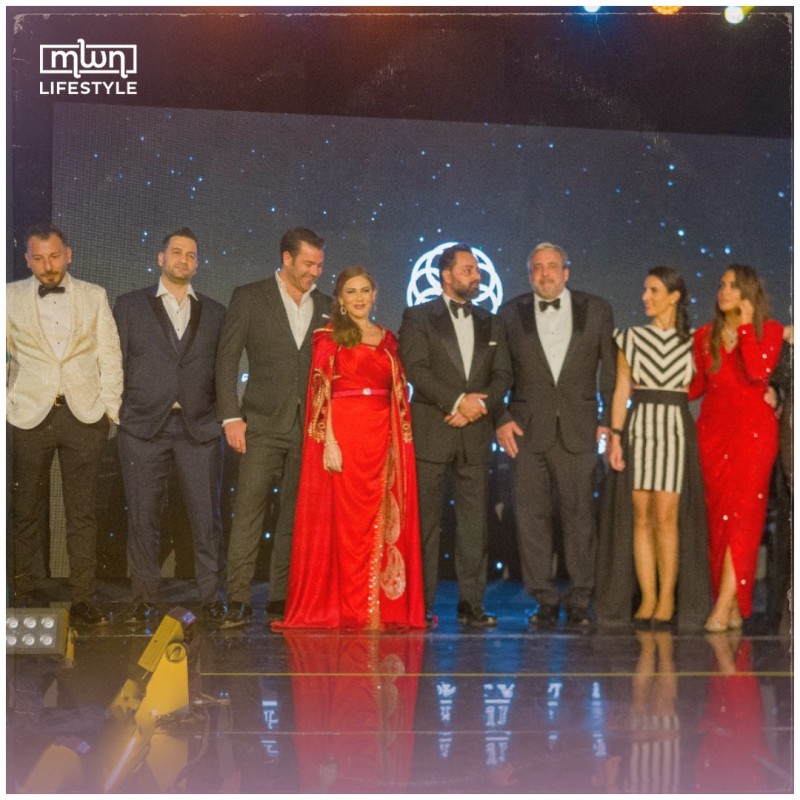Rabat – The Moroccan city of Marrakech hosted on February 10 the grand opening ceremony of the prestigious luxury brands club “Luxury Network,” organized by the Luxury Network International Awards.
During this event, around ten Moroccan and foreign brands were recognized for pushing the luxury industry to new heights and offering consumers a better quality of life.
The award ceremony was hosted by Moroccan journalist Samid Ghailan, who paid tribute to Samira Haddouchi, a Moroccan haute couture designer and caftan advocate who has worked for nearly thirty years to make the traditional Moroccan dress a part of the country’s cultural heritage.

Representatives of luxury brands around the world
Speaking at the event, Haddouchi expressed her gratitude to the Luxury Network organizers for providing designers, brands, promoters, and luxury enthusiasts with the opportunity to network and share knowledge.
Samira Haddouchi’s unique, history-inspired approach to creation
Haddouchi is a creative stylist whose models have gained worldwide recognition for their excellent fusion of contemporary style and Moroccan authenticity.
In an interview, Haddouchi said that one of the keys of her success is that she invested time in research that took her many centuries back to the earliest days of Moroccan dressing culture. As she reflected on the many facets of her historical research, the decorated designer said she was inspired by the various costumes that have defined Moroccan culture throughout the ages.
“I worked on both the new and old caftans. I researched Mansour Eddahbi [the sixth sultan of the Saadi dynasty] who used to wear the caftan, as this garment was worn by men at that epoch,” Haddouchi told the media on the sidelines of the event.

Global CEO of the Luxury Network International, Fares Ghattas
Haddouchi said her study of the history of the caftan led to the conclusion that the sultan was the one who created the Dfina (Moroccan traditional clothing), while his wife, Khanatha bint Bakkar, was involved in trading between Morocco and the UK. It was she who wore the brocade and imported it to Morocco, she explained.
The celebrated designer highlighted the way in which public perceptions of the caftan have considerably changed from negative to positive.
Moroccan youth in the 1980s and 1990s believed the caftan was only appropriate for older people, she explained.
But a remarkable paradigm shift started taking place in 2000 thanks to the efforts of a small number of very skilled designers, Haddouchi added.
Since then, the caftan has not only become well-known around the world, but has also been embraced by Moroccan youth as chic and a symbol of Moroccan authenticity and elegance.
A fashion pioneer in Morocco, Haddouchi was one of the first designers to promote Moroccan haute couture caftans in the early 2000s, before the caftan gained its current aura.

Artistic performance
“When I first started in 2000, I introduced the Moroccan caftan to demonstrate the existence of this garment,” she said, stressing that her goal was to make “every foreign country familiar with the Moroccan caftan and culture, just as they are with Couscous and Moroccan carpet.”
Moroccan caftan renaissance
Haddouchi was one of the designers, such as Albert Oiknine and Lahoucine Ait El Mahdi, who elevated the caftan by restoring, updating, and re-examining it through research.
“There was still creativity in the Moroccan haute couture caftan at the beginning of the 2000s until 2011,” the designer said, recalling what she described as the wonderful old days of the Moroccan caftan renaissance.
But for all her enthusiastic comments about the caftan renaissance, the stylist expressed her dismay at the lack of ingenuity and effortless manner in which caftan designers have constructed their creations since 2011. “We ended up with a scenario where anyone could construct a caftan by just a copy-paste job without any preparation,” Haddouchi lamented.

Awards ceremony
Of the affordability of her high couture products, Haddouchi conceded that only a certain category of customers can afford to purchase her more celebrated and expensive items. The feted designer added, however, that she also makes sure to create middle-class and reasonably priced caftans to attract a wider range of customers from various walks of life.
A native of Tangier who has been a true ambassador of the Moroccan caftan for over twenty years, Haddouchi insists she has drawn the bulk of her inspiration from the feminine resilience, softness and brilliance of women.
For fans and observers of the thriving Moroccan design industry, what sets Haddouchi apart is that she has always had a knack for updating the caftan while preserving its originality and traditional character. In other words, the Tangier native has always been bold in experimenting with new cuts, colors, and designs.
Little wonder, then, that the Moroccan fashion designer has received numerous invitations to important national and international fashion events. Her creations have caught the eye of some of the biggest names in fashion and have been worn by well-known celebrities such as American actress Whitney Houston and Lebanese singer Haifa Wehbe.
Read also: Perfumes from Bab Moulay Idriss Company Captivate Audiences at Luxury Network Awards
















